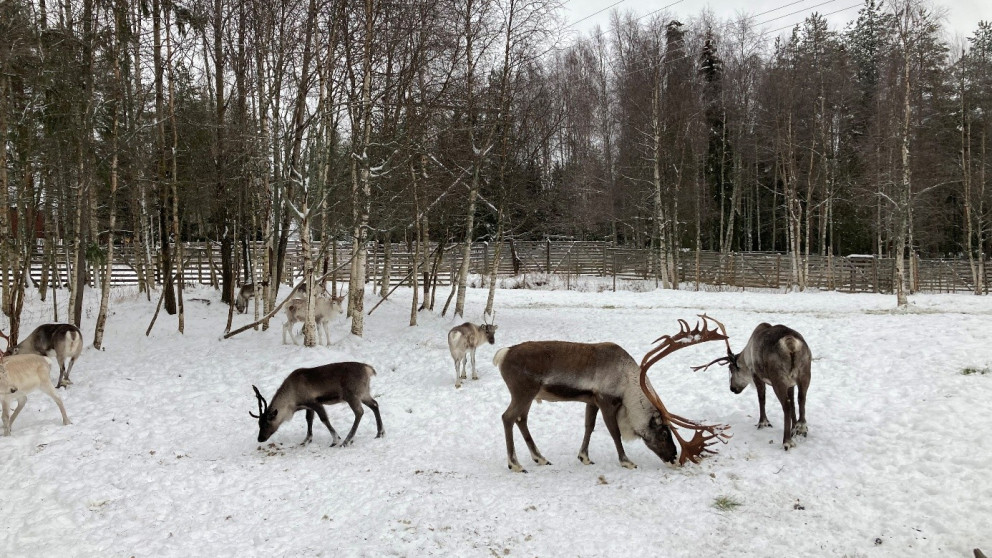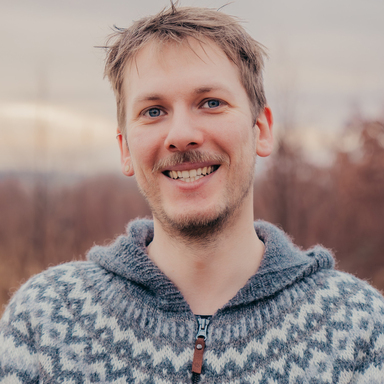Icy Waters – Diving Into Transdisciplinary Arctic Research
05.11.2025

Science, people, and places
Anyone who does research – especially research that is meant for more than a specialist audience – quickly realises that other people’s livelihoods and financial futures can depend on the results. In other words, scientific findings have real‑world effects and implications. If you look a little closer, you will see that this applies to far more research than you might think at first.
In environmental science, results can bring great benefits or cause great harm, depending on how they are used. When the work takes place in fragile, hard to access ecosystems and the impacts may affect a local population whose way of life and culture are tightly linked to that ecosystem, it becomes clear that studying a chemical process or the spread of a single species is not sufficient.
How can we best deal with complexity?
I would like to draw on my own experience to show what it was like to come from a purely natural‑scientific field of research and be suddenly confronted with this challenge and what lessons I have learned on my journey toward a transdisciplinary approach.
I am a geo ecologist and have spent several years investigating environmental change in the terrestrial Arctic, in particular the influence of livestock – especially reindeer – on soil temperature, soil carbon and vegetation. In my work I identified some potentially positive environmental effects of reindeer husbandry and thought that, by modifying existing husbandry practices in terms of timing or space, we could harness these benefits to meet the modern challenges of climate change [1] — so, who was I to approach with this idea? And where does the rabbit hole begin? Who is authorised to change a way of life that has developed over thousands of years?
The answer was, unsurprisingly, the reindeer herders who maintain this traditional livelihood. But how do I get in touch with them? Who are the right contacts? How do individual herders, local and regional stakeholders, and the wider community feel about innovation? At that point it became clear that communication needed to be as direct and low threshold as possible (ideally face to face and on site) and also that I had no experience with this type of engagement.
I had learned how to speak to scientific audiences and how to bring science to children and young people, but I lacked the classic tools of the social sciences and the ability to engage in low threshold communication with diverse interest groups. I discovered that every topic is viewed from a range of perspectives—some I had never heard of, others I could not understand because I was too removed from the lived reality of the people affected. I read extensively, tried to adopt different points of view and to take a “multi proxy” approach, only to hit my own limits quickly.
The way humanity is connected to, and interacts with, the environment is extremely complex and strongly shaped by culture. As many indigenous authors, such as Robin Wall Kimmerer, remind us, it is no accident that the environment, people, beliefs and science cannot be separated: “Each person, human or no, is bound to every other in a reciprocal relationship. Just as all beings have a duty to me, I have a duty to them. If an animal gives its life to feed me, I am in turn bound to support its life. If I receive a stream’s gift of pure water, then I am responsible for returning a gift in kind. An integral part of a human’s education is to know those duties and how to perform them.“ [2] This way of thinking is at best marginalised, and often completely absent, in a typical academic environment. Because such perspectives are so rarely represented, researchers should actively seek them out, try to understand them – or at least acknowledge them – and recognise when our own capacities are exhausted. I reached that realisation surprisingly quickly.
Don’t be afraid!
There are good ways to deal with this complexity. Deep down you know you cannot do everything, and turning that realisation into action is already a major step. Recognising that you need support and building networks that can provide it quickly became the focus of my project. This involves networking with colleagues from the social and political sciences who are familiar with the local context and already have contacts among the population; allocating generous time for on‑site communication—preferably from an early stage and with a flexible, rather than rigid, plan—because conversations will reveal who to approach next and which overlooked issues or conflicts must be considered; and establishing links with local associations and authorities, which is simply too much for one person to manage alone. From these experiences I distilled a few points for future project planning:
- Consider potential environmental impacts right from the outset: Who could it affect, who is interested in it? I have found that co-creative project approaches work very well if you see your own research as a service that you bring to a project, rather than making the research the main (often emotional) focus of the project.
- Invite colleagues from other research fields to read various iterations of the project proposal and incorporate their input.
- Endeavour to be aware of your own knowledge, experience and capacity limits.
Nobody can tackle such multi layered projects without support—and nobody expects you to do so! The western academic world is only slowly realising that systems are linked not just ecologically but also socially, culturally and economically at local, regional and global scales, and that they must be addressed accordingly to generate a lasting positive impact. Even if this shift proceeds gradually, the fact that it is happening is a positive step. So, don’t be afraid to follow this path—after all, don’t we all want our research to make a genuinely positive contribution to the bigger picture?
[1]For more on this, see: https://doi.org/10.1080/15230430.2024.2379717
[2]Kimmerer, R. W. 2013. Braiding Sweetgrass. First edition ed. Milkweed Editions,
